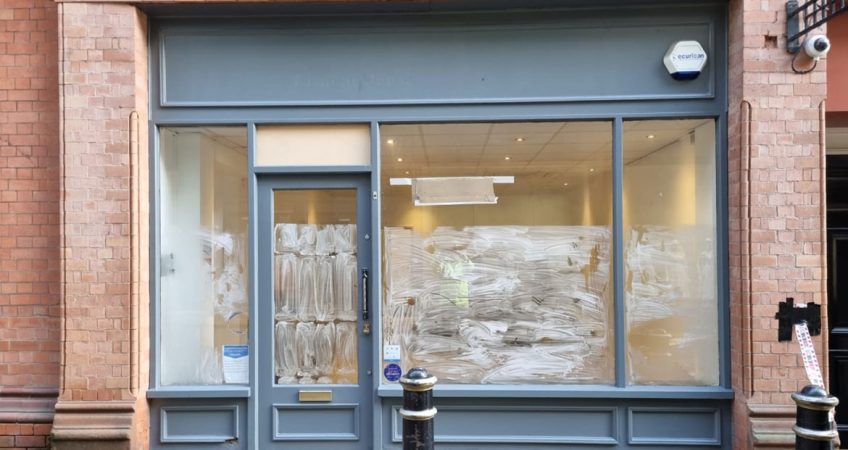In today's fast-paced retail environment, the design of a store plays a crucial role in drawing in customers and enhancing their shopping experience. A well-planned retail fit-out not just mirrors a brand's identity but also cultivates an inviting atmosphere that invites consumers to spend more time and money. Understanding what a retail fit-out is and its importance can lay the groundwork for a successful business. It is about transforming a space into something that resonates with customers, making them feel at home and appreciated.

As we explore the psychology behind retail fit-out design, we will explore how factors like layout, lighting, and materials can significantly impact customer engagement and sales. From the first concept to the last touches, we'll provide a comprehensive guide that not only covers the most recent trends but also offers practical advice for financial planning, managing the fit-out process, and maintaining sustainability in design. By understanding these essential aspects, retailers can create environments that not only meet functional needs but also build emotional connections with the customers.
Grasping Retail Fit-Outs
Retail fit-outs refer to the process of designing and constructing the inside of a retail environment to make it functional, appealing, and in harmony with the company's identity. This procedure is crucial for businesses aiming to create a welcoming atmosphere that attracts shoppers in and motivates them to shop. Retail Fit Out Wiltshire executed fit-out not only creates a space for products but also enhances the client journey, making it essential for a retail operation's success.
The importance of a commercial design cannot be overstated. It influences everything from the store design and customer movement to the way products are displayed and how the overall atmosphere is perceived. A thoughtfully designed space can greatly impact a customer’s state of mind and decision-making process, leading to higher foot traffic and increased sales. Additionally, an effective design reflects the brand's values and resonates with its demographic, building loyalty and repeat visits.
The commercial fit-out procedure typically involves a series of stages, starting from preliminary design ideas to the final setup of fixtures and equipment. Retail Fit Out Dorset requires careful planning and coordination, including considerations for identity, client engagement, lighting, hues, and substances. Understanding the various components involved in a retail fit-out is vital for any business owner looking to maximize their resources and create a compelling commercial space.
Creation Techniques for Impactful Retail Spaces
Creating an impactful retail space requires a profound understanding of customer behavior and preferences. Successful designs feature elements that attract customers in, encourage exploration, and facilitate easy navigation. One important strategy is to create clear pathways, leading customers through the store in a way that guarantees them feel comfortable and connected. This can be accomplished through intelligent layout planning that considers high-demand areas, as well as utilizing focal points to grab attention.
Using visual merchandising techniques can profoundly enhance customer experience. Products should be showcased in an inviting manner that not only emphasizes their features but also communicates a story. Using props, creative shelving, and thematic displays can transform the shopping experience more engaging. Additionally, strategically situating promotional displays near checkout areas can help generate impulse buys, enhancing overall sales.
A further essential aspect of design is the deliberate use of lighting and color. Lighting should create an pleasant atmosphere while emphasizing key products. The appropriate color palette can evoke emotions and influence customer behavior, making it essential to choose colors that match with brand identity and target demographics. By mindfully integrating these design strategies, retailers can create spaces that encourage engagement, encourage sales, and leave lasting effects on customers.
Managing Your Retail Fit-Out Project
Easily managing a retail fit-out project necessitates detailed planning and execution. First, establish a clear project timeline that outlines each phase from concept to completion. This timeline must feature key milestones, such as the timing of design plans will be finalized, the timing of construction kicks off, and dates for inspections. Frequent check-ins are crucial to ensure that each stage is on schedule, permits adjustments as needed. Clear communication amongst your team is crucial to tackle any issues promptly and ensure the project progressing smoothly.
Budget management is another vital aspect of project oversight. Create a comprehensive budget that includes all potential costs, such as materials, labor, and surprise expenses. Keeping track of expenditures and comparing them against your budget will help you find any discrepancies early on. Utilize financial management tools to aid in monitoring costs and ensuring transparency with stakeholders. Should surprise costs arise, having a contingency fund can provide the necessary leeway to make swift decisions without jeopardizing the quality of your fit-out.
Finally, fostering strong relationships with contractors and suppliers can significantly impact the success of your fit-out project. Choose reputable professionals who grasp your vision and are dedicated to delivering high-quality work. Regular meetings with your contractors will encourage collaboration and make sure that everyone is on the same page with your business goals. By developing this partnership, you not only enhance the quality of the work but also establish an environment where concerns can be addressed promptly, leading to a more effective fit-out process overall.
